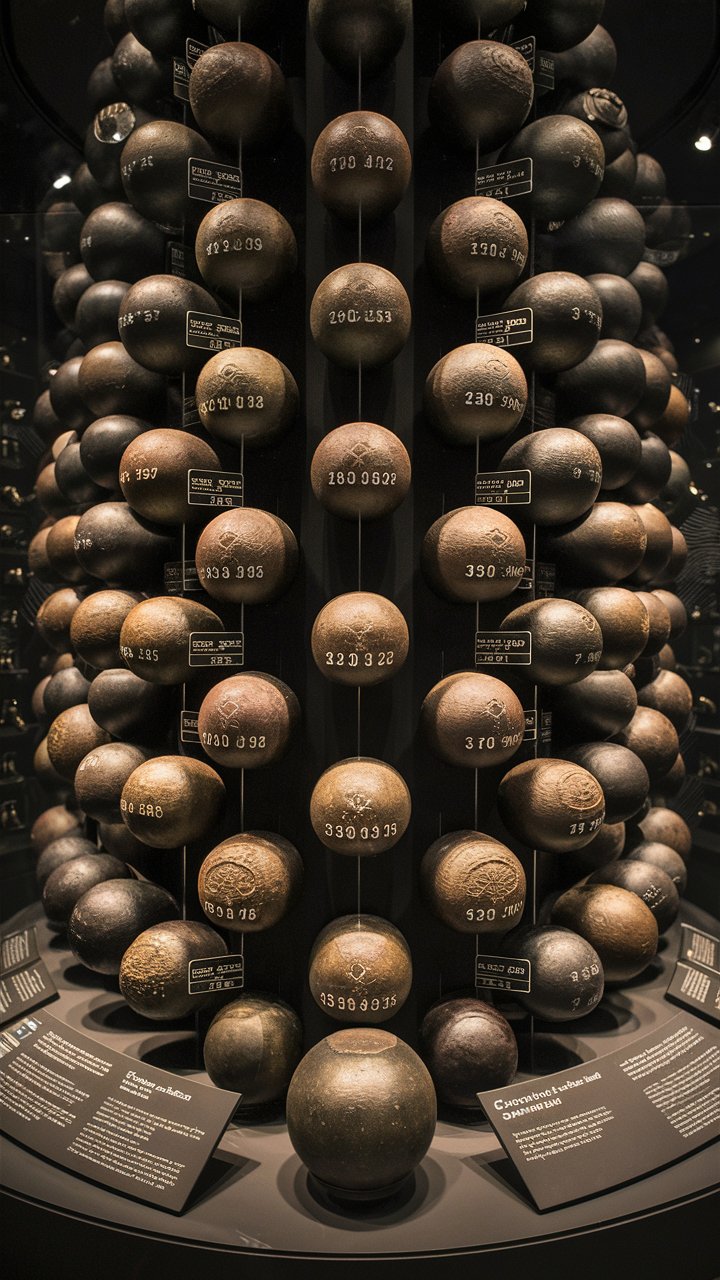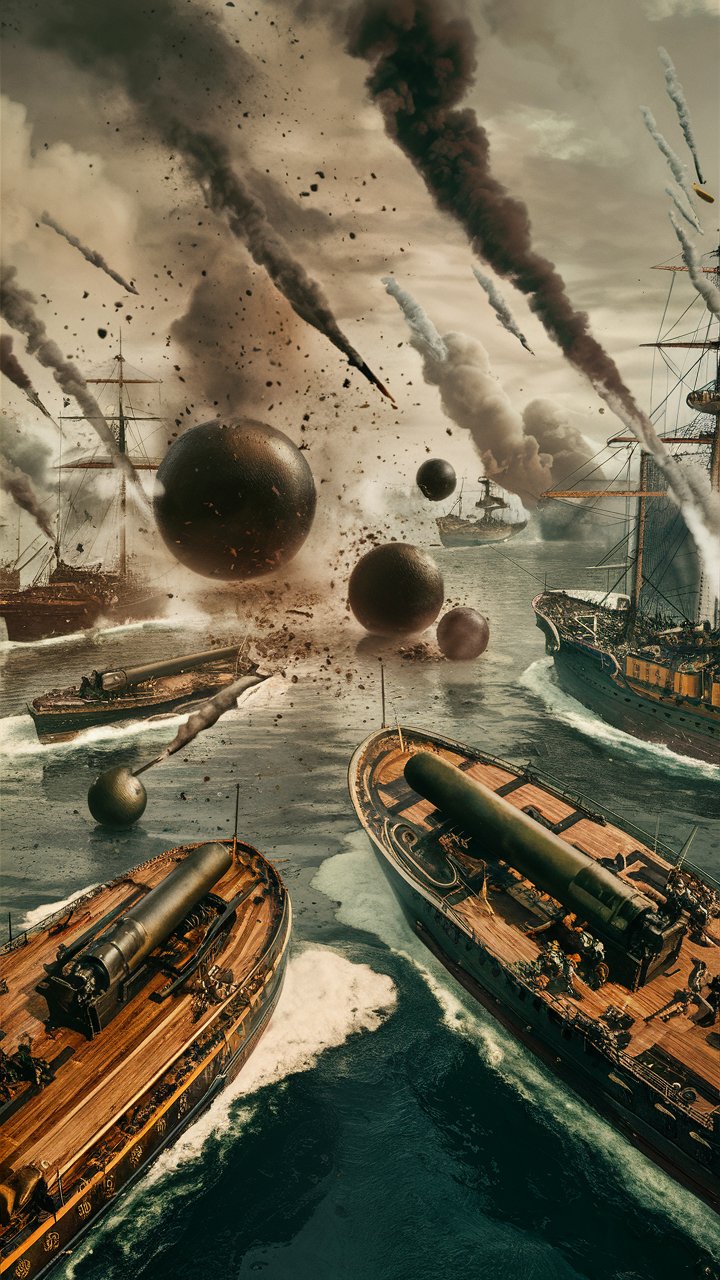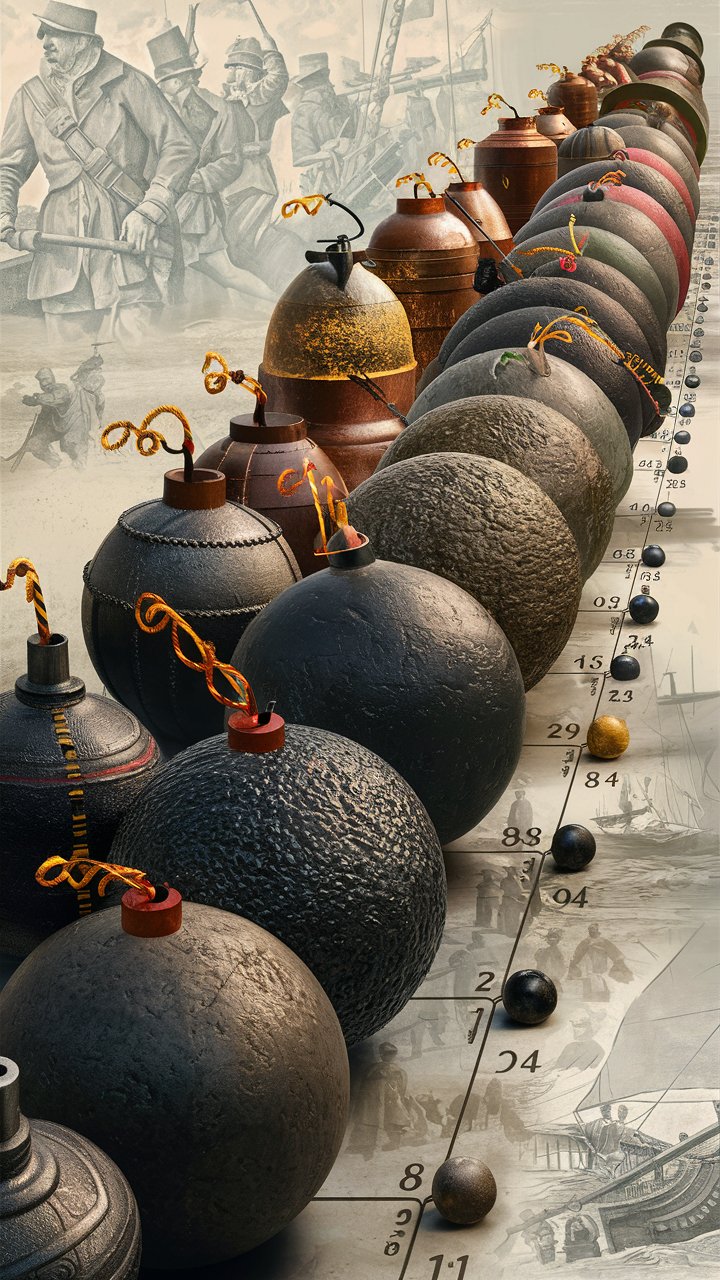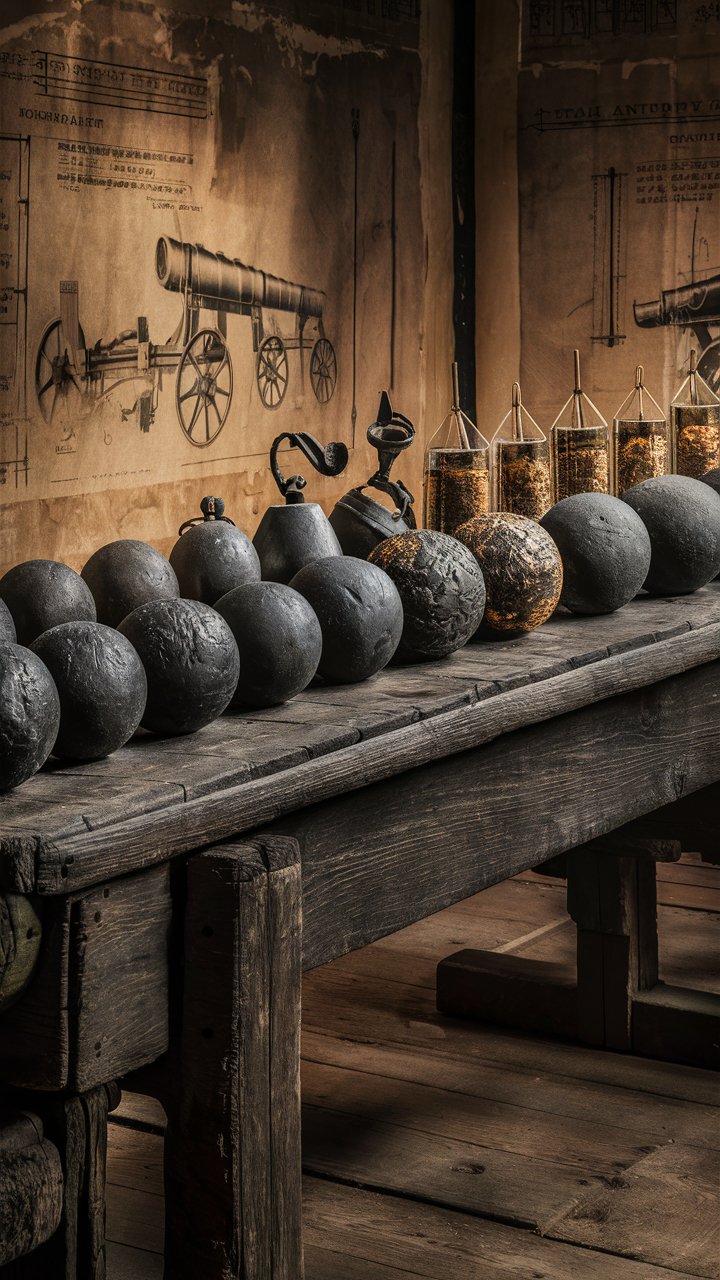Introduction
Exploring the mass and diameter of historical cannonballs reveals much about warfare’s technological evolution. Throughout history, cannonballs varied greatly in weight and size, crucial factors in determining a gun’s bore and its range and power. For instance, during the 18th century, typical cannonballs weighed from 4 to 42 pounds, with diameters that matched the design of the cannons. These cannonballs often featured in museums, showcasing how demands in metallurgy and warfare drove their production. The variations in weight and size across different centuries reflect the shifts in military needs and technological advancements, providing a clearer understanding of how artillery has influenced historical battles and sieges.
The diameter of a cannonball significantly impacted the design of cannons, influencing everything from the construction of gun carriages to battlefield tactics. Larger diameters required heavier and more robust cannons, affecting their mobility and deployment. This integral relationship between cannonball size and cannon design was essential in shaping the use of artillery in warfare. Additionally, the role of shot diameter was vital in determining a cannonball’s effectiveness, where larger diameters meant greater destructive power against fortifications and ships. The historical records from the British Royal Ordnance illustrate how shot diameter influenced military strategies, with larger cannonballs reserved for significant impacts.
Key Takeaways
- Cannonball size and weight were critical in defining the gun’s bore, influencing its range and power significantly throughout history.
- Larger diameters in cannonballs required heavier, more robust cannons, impacting their mobility and deployment on the battlefield.
- The diameter of a cannonball’s shot was crucial for its effectiveness, with larger diameters enabling more destructive power against fortifications and ships.
- Technological advances in measuring shot diameters improved the consistency and reliability of artillery, ensuring each cannonball met precise standards.
- The evolution from solid shot to explosive shells marked significant advancements in artillery technology, increasing the lethality of weapons used in warfare.
- Specialty cannonballs developed to meet specific military needs demonstrate the adaptability and innovation in ordnance design.
Exploring the Mass and Diameter of Historical Cannonballs
Cannonballs have varied greatly in weight and diameter over the centuries. In the 18th century, the size of a cannonball was crucial, as it determined the gun’s bore and ultimately its range and power. Typical weights ranged from 4 to 42 pounds, with diameters corresponding to the cannon’s design. Museums often display these varying sizes, illustrating how metallurgy and warfare demands influenced cannonball production. Understanding these differences helps us appreciate the technological advancements in artillery. The cannonballs 12 inch and 6 inch diameter were particularly significant, representing a balance between weight and usability in field guns and naval armaments.
Variations in Cannonball Weights Across Centuries
The weight of cannonballs has shown considerable variation, reflecting changes in military needs and materials technology. From the light 4lb shots used in smaller field guns to the massive 42lb cannonballs fired from ship-mounted artillery, each was designed with a specific purpose in mind. Museums and historical documents often showcase these variations, highlighting how each played a role in different battles and sieges throughout history.
The Importance of Diameter in Cannon Design
The diameter of a cannonball directly influenced the design of cannons themselves. Larger diameters required more robust and heavier cannons, which impacted the mobility and deployment of artillery units. This relationship between ball size and cannon design was critical in shaping how artillery was used in warfare, dictating everything from the construction of gun carriages to the tactics employed on the battlefield.
The Role of Shot Diameter in Determining Cannonball Effectiveness
The diameter of a cannonball’s shot was vital in determining its effectiveness. Larger diameters meant more destructive power against fortifications and ships. Historical records from the British Royal Ordnance detail how shot diameter influenced battle strategies, with larger cannonballs reserved for breaking down walls and smaller ones for anti-personnel purposes. This specialization by diameter played a significant role in naval and army tactics during conflicts like the Civil War.
Impact of Cannonball Size on Military Tactics
Material and Design Changes: Over time, the materials and design of cannonballs evolved from stone to iron and lead to increase effectiveness. These changes allowed for more effective breaching of fortifications and greater damage upon impact.
Strategic Deployment in Warfare: Larger cannonballs were used to break down fortifications and damage larger structures, while smaller ones targeted personnel, spreading shrapnel over wider areas. This strategic deployment influenced military operations and battlefield tactics.
Advancements in Artillery Technology: Technological advancements, including the development of rifled barrels, allowed for more precise targeting and increased the lethality of cannonballs. This progression significantly altered how battles were fought, emphasizing the role of artillery in military strategy.
These points highlight the critical role of cannonball development and strategic use in shaping historical military tactics and outcomes.
Impact of Shot Diameter on Battlefield Tactics
Shot diameter was a critical factor in the effectiveness of cannonballs during battles. Larger diameters provided a greater impact force, essential for breaking through fortifications or disabling enemy ships. Smaller shots were more effective against personnel, spreading shrapnel over a wider area. Understanding this dynamic was key for military leaders in planning their artillery use.
Technological Advances in Cannonball Measurement
Advancements in measuring and standardizing shot diameters were crucial for the consistency and reliability of artillery fire. The development of more precise measuring tools allowed for better quality control in cannonball production, ensuring that each shot met specific standards for weight and size, which was essential for the accurate range and impact of artillery.
A Roundup of Cannonball Types Across Different Eras
From solid shot to explosive shells, cannonballs evolved significantly. Early cannonballs were simple iron spheres, but by the time of the Civil War, advancements had led to more complex designs, including hollow balls filled with gunpowder and fitted with fuses. The type of cannonball used often depended on the intended target and the conditions of warfare, with heavier and larger rounds used to maximize damage from greater distances.
Evolution from Solid to Explosive Shot
The transition from solid iron shots to explosive shells marked a significant evolution in artillery technology. By the Civil War, explosive cannonballs with internal fuses became common, drastically increasing the lethality of artillery. These advancements allowed armies to engage targets with greater precision and destructive capability.
Specialty Cannonballs for Specific Military Needs
Over time, various types of cannonballs were developed to meet specific military needs, including grapeshot for anti-personnel purposes and chain shot for destroying sails and rigging on ships. Each type was a response to tactical demands, demonstrating the adaptability and innovation in ordnance design.
“When a soldier is hit by a cannonball, rags are as becoming as purple.” – Henry David Thoreau
Ordinance Evolution: How Cannonball Designs Changed Over Time
The evolution of ordnance, particularly cannonballs, reflects changes in military technology and tactics. Initially, cannonballs were designed simply to break through walls or disrupt formations. However, over time, innovations such as the introduction of cast iron and changes in cannon design allowed for more varied and specialized ammunition. The development of rifled cannons in the 19th century marked a significant shift, allowing for greater precision and range, which in turn influenced cannonball design to become more aerodynamic and effective.
Innovations in Cannonball Design and Material
Throughout military history, innovations in cannonball design and the materials used for their construction played pivotal roles. The introduction of cast iron improved durability and allowed for more complex designs like the sabot and shrapnel shells, enhancing battlefield effectiveness.
Rifled Cannons and Their Impact on Ammunition
The advent of rifled cannons in the 19th century revolutionized artillery, necessitating changes in cannonball design to accommodate the new rifling patterns. These changes made cannonballs more aerodynamic and accurate, significantly altering their impact on warfare.
[lasso rel=”amazon-30″ id=”2003″]
Conclusion
The evolution of cannonball design from simple iron spheres to complex explosive shells marks a profound shift in artillery technology. From the 6lb cannon balls of the Civil War to the 18lb projectiles used later, each innovation was tailored to meet specific battlefield needs, whether for breaking fortifications or anti-personnel purposes. The development of cannonballs that could charge through defenses with greater impact shows how deeply material advancements, such as the introduction of steel, have influenced military strategies and increased the lethality of ordnance.
Furthermore, the measurement and standardization of cannonball sizes—from 4 lb to 42 lb—have been crucial for ensuring the effectiveness and reliability of artillery. As technologies evolved, so did the loading mechanisms and handling techniques, making the artillery more adaptable and effective in various combat scenarios. The historical transition to rifled cannons showcases a significant advancement, allowing cannonballs to be more aerodynamic and precise, drastically changing the dynamics of battlefield engagements and emphasizing the ongoing impact of innovation in military hardware.












